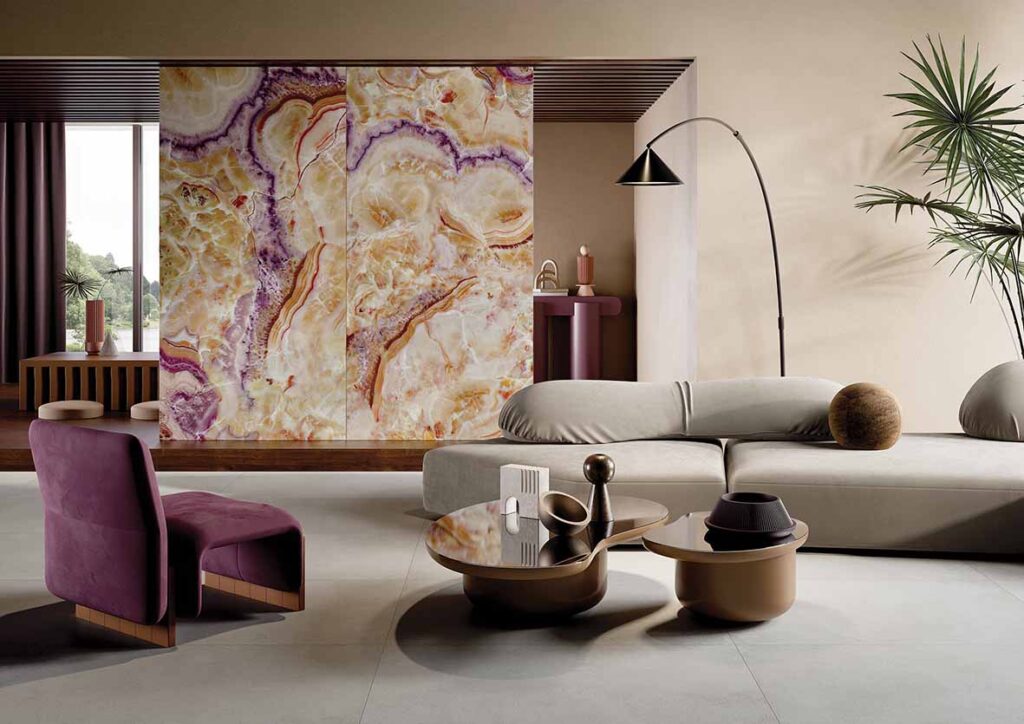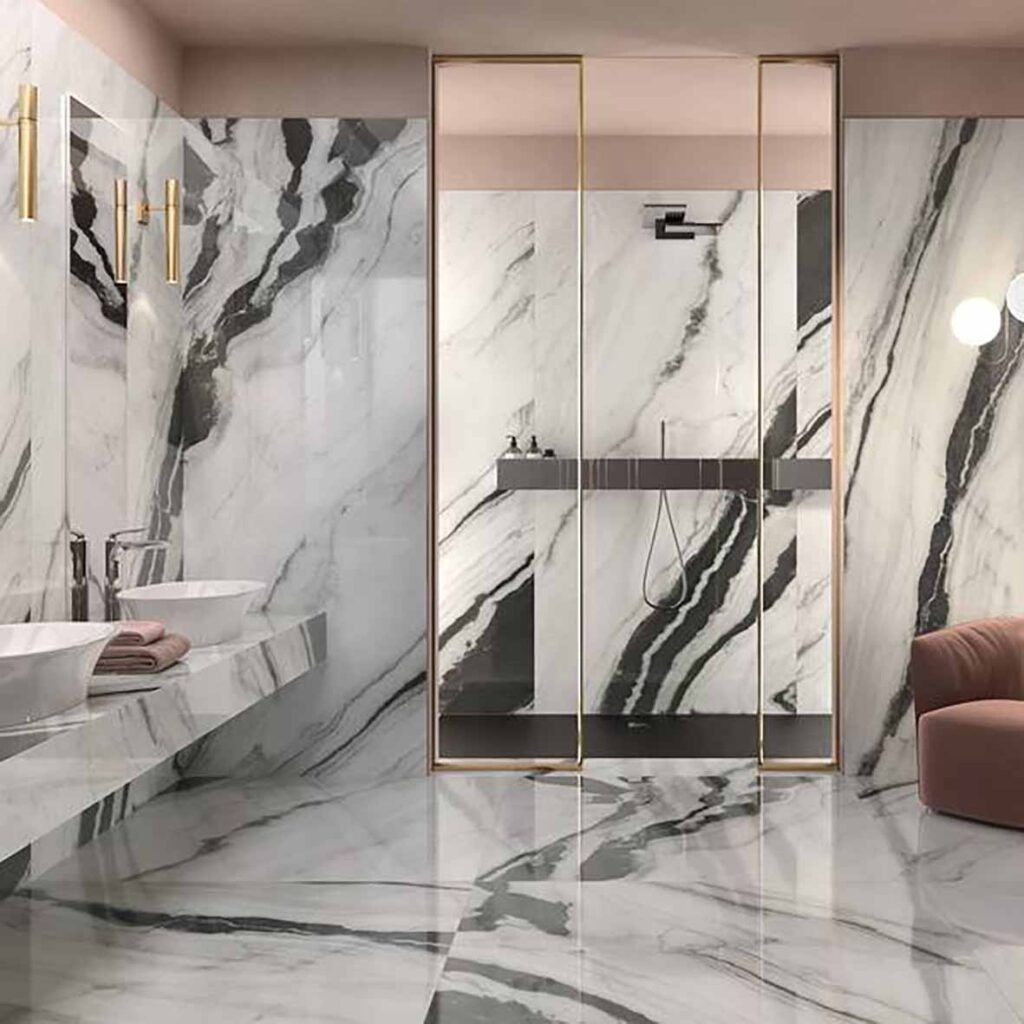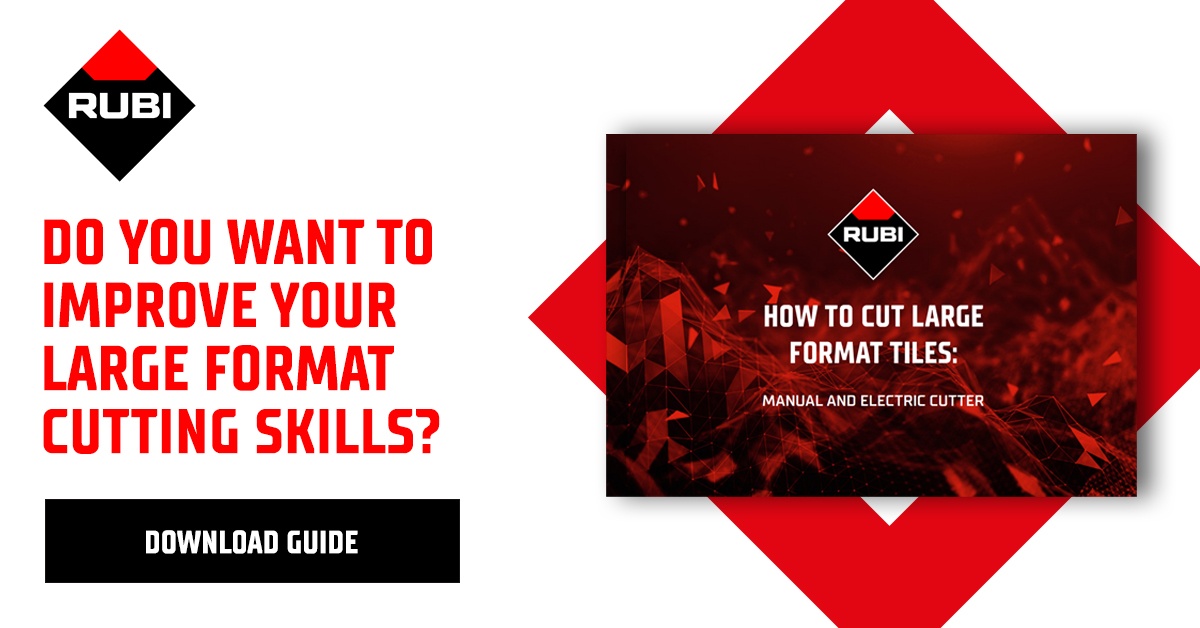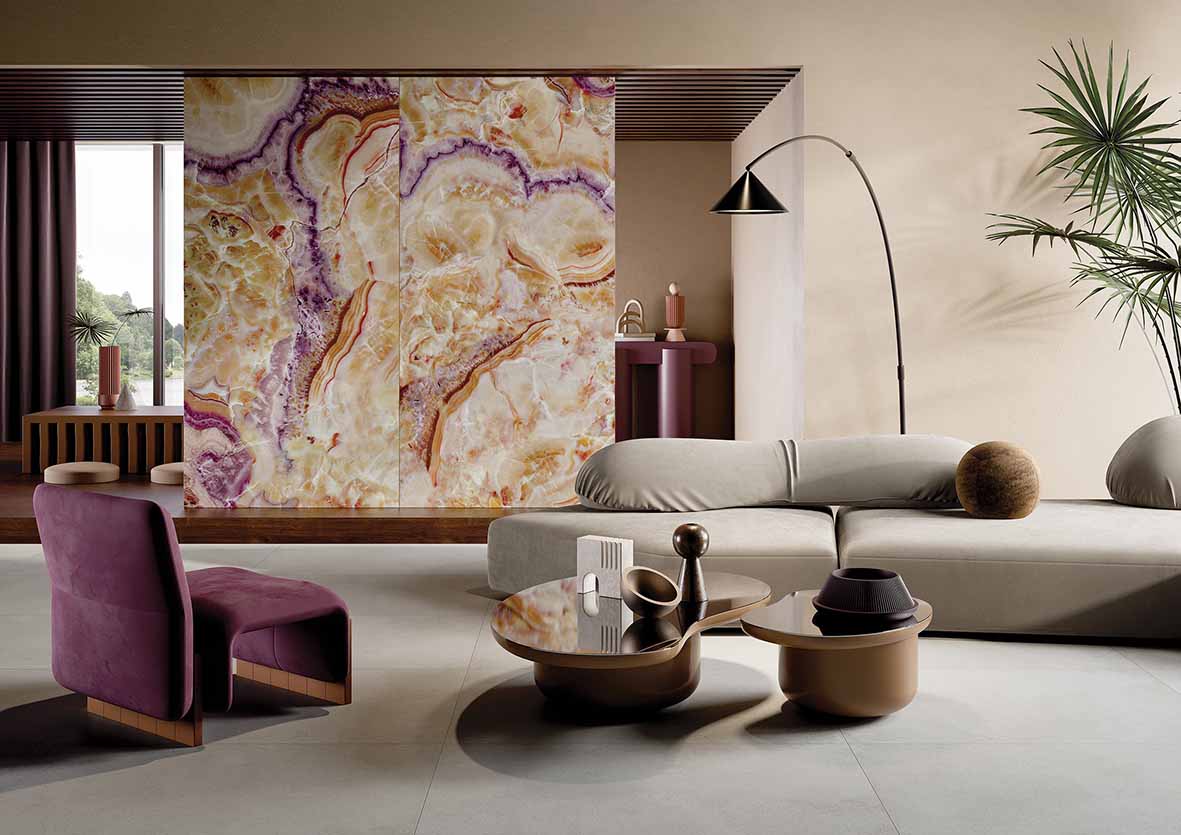Large-format ceramic tiles are currently trending in the construction sector because they offer a solution that combines practicality with aesthetic or decorative objectives, both indoors and outdoors. In this blog we discuss how to tile using large-format ceramic tiles and tips for installing them.


What is Large-Format Ceramic?
Large-format ceramic refers to any tile that has one side measuring more than 40 cm.
These tiles are increasingly used in the construction of all types of buildings, both new constructions and renovations. The most common formats currently are 60×60, 60×120, 30×120, 120×120, 75 x 150 cm, among others.

Advantages of Large-Format Ceramic
The advantages of large-format ceramic tiles include the following:
- They provide a greater sense of space
- They create a sense of continuity
- They offer varied applications
Moreover, while it is true that installing each piece involves more time and effort, each piece covers a larger area, and fewer tiles are needed. Therefore, we can add another advantage: large-format ceramic ultimately optimises the time and resources used, which is one of the most important factors in any construction project.
Is it Complicated to Install This Type of Ceramic?
Installing large-format tiles, while not excessively complex, does require some adaptation to the installation techniques and tools used to handle these larger and heavier pieces with ease.

Tips for Installing Large-Format Ceramic
Following these tips can make the task much easier and help you achieve fully satisfactory results:
- It is very important that the substrate is a stable and perfectly flat surface. If it does not meet these parameters, the substrate must be conditioned.
- Installation is carried out using the double gluing technique. This means applying a thin layer of adhesive on the back of the tile and using a notched trowel suitable for the tile format on the substrate.
- It is highly recommended to use suction cups. Not only to place the ceramic pieces more comfortably but also to adjust their position and check the adhesion of the ceramic adhesive.
- To ensure a perfectly flat surface and avoid the dreaded “lippage,” use a levelling system between pieces to prevent them from moving during setting.
- The placement joint is more important than ever, so use spacers and “T” shapes. This helps accommodate the small dimensional variations that the pieces may sometimes have. Additionally, this promotes curing through the joints. The use of levelling systems does not exempt from using spacers and “T” shapes as separators.
- Regarding cuts, large-format tiles can be cut with both manual and electric cutters. However, ensure you have models suitable for large formats.
Conclusion
As mentioned earlier, the growing popularity of large-format ceramic tiles is mainly due to their significant advantages, which often far outweigh the inconveniences related to transportation and handling. Large-format ceramic tiles allow for more creativity with bigger patterns, bolder colours, and the ability to cut tiles down to desired sizes if necessary. Will you be using large-format ceramics in your next installation? Let us know in the comments.



Post a comment